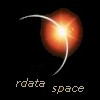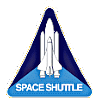
U.S. Space Shuttle (Space Transport System)
Payloads - Solar System Research


U.S. Space Shuttle (Space Transport System)
Payloads - Solar System Research

Many shuttle flights included experiments dedicated to Earth observation, solar observation and probes, solar system probes and astronomy.
This research used pressurised habitat modules and un-pressurised carriers in the Shuttle cargo bay; free flying orbital platforms and probes launched from the Shuttle.
This article covers the primary payloads only.
The experiment payloads summarised in this page are in the areas of:-
▽ 1. Earth Research - Including Earth observation, imaging and atmospheric studies.
▽ 2. Sun Research - Using free flying probes and platforms.
▽ 3. Planetary Research - Deployment of planetary probes.
The shuttle in orbit conducted a number of experiments to observe the Earth and study its atmosphere. This section summarises the main research carried out in this area during shuttle missions.
The primary Earth research payloads are shown in the table below and the following paragraphs.
| Acronym | Name | STS No. | Year |
| OSTA | NASA Office of Space and Terrestrial Applications-1, 2, 3 | 2, 7, 41G | 1981, 1983, 1984 |
| OSS | Office of Space Science and Applications-l | 3 | 1982 |
| SSBUV | Shuttle Solar Backscatter Ultraviolet instrument-1, 2, 3, 4, 5, 6, 7 |
34, 41, 43, 45, 62, 66, 72 |
1989-92, 1994, 1996 |
| UARS | Upper Atmosphere Research Satellite | 48 | 1991 |
| LAGEOS | Laser Geodynamic Satellite-II | 52 | 1992 |
| SRL | Space Radar Laboratory-1, 2 | 59, 68 | 1994 |
| LITE | LIDAR In-Space Technology Experiment | 64 | 1994 |
| CRISTA -SPAS |
Cryogenic Infrared Spectrometer Telescope for Atmosphere - Shuttle Pallet Satellite-1, 2 |
66, 85 | 1994, 1997 |
| STARSHINE | Student Tracked Atmospheric Research Satellite for Heuristic International Networking Equipment-1, 2 |
96, 108 | 1999, 2001 |
| SRTM | Shuttle Radar Topography Mission | 99 | 2000 |
| ANDE | Atmospheric Neutral Density Experiment-2 | 127 | 2009 |
Earth observation and environment experiments mounted on Spacelab pallet in payload bay. They included the Shuttle Imaging Radar, Shuttle Multi spectral Infrared Radiometer, Feature Identification and Location Experiment, Measurement of Air Pollution from Satellites, Ocean Color Experiment and Night/Day optical Survey of Lightning. OSTA-1 and 3 each used one un-pressurised Spacelab Pallet exposed to space.
[STS-2, 7, 41G] (1981, 1983, 1984)
(Ref: Wikipedia Spacelab)
NASA experiments consisting of a number of instruments mounted on an un-pressurised Spacelab Pallet, exposed to space, to obtain data on the near-Earth environment and the extent of contamination caused by the orbiter itself.
[STS-3] (1982)
(Ref: Wikipedia Spacelab)
Designed to measure the amount of energy received from the Sun and re-radiated into space. The seasonal movement of energy from the tropics to the polar regions was also studied. Deployed from the payload bay by the shuttle robot arm and boosted into orbit 350 miles (560 km) above the Earth by on-board thrusters.
[STS-41G] (1984)
(Ref: Wikipedia Earth Radiation Budget Satellite Gunter's Space Page ERBS)
Developed by NASA to compare the observations of several ozone measuring instruments aboard the National Oceanic and Atmospheric Administration's TIROS satellites (NOAA-9 and NOAA-11) and NASA's NIMBUS)-7 satellite. The SSBUV data is used to calibrate these instruments to insure the most accurate readings possible for the detection of ozone trends.
[STS-34, 41, 43, 45, 62, 66, 72] (1989-92, 1994, 1996)
(Ref: Wikipedia Ozone, Backscatter Encyclopedia Astronautica SSBUV)
During its planned 18-month mission, the observatory will make the most extensive study ever conducted of the Earth's troposphere, the upper level of the planet's envelope of life sustaining gases which also include the protective ozone layer.
UARS has ten sensing and measuring devices: Cryogenic Limb Array Etalon Spectrometer (CLAES), Improved Stratospheric and Mesospheric Sounder (ISAMS), Microwave Limb Sounder (MLS), Halogen Occultation Experiment (HALOE), High Resolution Doppler Imager (HRDI), Wind Imaging Interferometer (WlNDII), Solar Ultraviolet Spectral Irradiance Monitor (SUSIM), Solar/Stellar Irradiance Comparison Experiment (SOLSTICE); Particle Environment Monitor (PEM) and Active Cavity Radiometer Irradiance Monitor (ACRIM II).
[STS-48] (1991)
(Ref: Wikipedia UARS Gunter's Space Page UARS Encyclopedia Astronautica UARS)
A joint effort between NASA and the Italian Space Agency (ASI). A passive satellite dedicated exclusively to laser ranging. Laser ranging involves sending laser beams from Earth to the satellite and recording the round-trip travel time.
This provides a reference point for laser ranging experiments that monitored the motion of the Earth's crust, measure and understand the "wobble" in the Earth's axis of rotation, collected information on the Earth's size and shape and more accurately determined the length of the day.
[STS-52] (1992)
(Ref: Wikipedia LAGOES Gunter's Space Page LAGEOS Encyclopedia Astronautica LAGEOS)
Both missions comprised of two elements carried on an un-pressurised Spacelab pallet:
1. A suite of radar instruments called Space borne Imaging Radar-C/X-Band Synthetic Aperture Radar (SIR-C/X-SAR) jointly developed by U.S. (NASA) with the German Space Agency (DARA) and the Italian Space Agency (ASI).
2. An atmospheric instrument called Measurement of Air Pollution from Satellite (MAPS). SRL was part of NASA's Mission to Planet Earth, the agency's program that is studying how our global environment is changing.
[STS-59, 68] (1994)
(Ref: Wikipedia Spaceborne Imaging Radar Encyclopedia Astronautica SRL)
LIDAR stands for light detection and ranging, a type of optical radar using laser pulses instead of radio waves to study Earth's atmosphere. Unprecedented views were obtained of cloud structures, storm systems, dust clouds, pollutants, forest burning and surface reflectance. It was carried on an un-pressurised Spacelab pallet. LITE science program was part of NASA's Mission to Planet Earth.
The LITE instrument was mounted to a pallet inside the open payload bay of Discovery, which orbited "upside-down" (with the bay pointed toward Earth). Discovery flew at a relatively low altitude (about 160 miles or 260 kilometers), so that each downward-pointing LIDAR pulse was dispersed as little as possible on its way down through the atmosphere.
[STS-64] (1994)
(Ref: Wikipedia LIDAR)
CRISTA is the Cryogenic Infrared Spectrometer Telescope for Atmosphere - Shuttle Pallet Satellite. It is a joint U.S./German experiment, was designed to explore the variability of the atmosphere and provide measurements that will complement those obtained by the Upper Atmosphere Research Satellite (UARS) launched aboard Discovery in 1991. The instruments were mounted on Shuttle Pallet Satellites (SPASs) which were deployed and retrieved by the shuttle's robot arm as free-flying satellites.
[STS-66, 85] (1994, 1997)
(Ref: Journal of Geophysical Research CRISTA Gunter's Space Page CRISTA-SPAS 1, 2)
The STARSHINE is the Student Tracked Atmospheric Research Satellite for Heuristic International Networking Equipment satellite. It consisted of an inert hollow sphere covered by small flat, polished mirrors. It was used to train international student volunteer observers to visually track it during morning and evening twilight intervals to calculate its orbit and derive atmospheric density from drag-induced changes in its orbit over time.
[STS-96, 108] (1999, 2001)
(Ref: Wikipedia STARSHINE Gunter's Space Page Starshine 1, 2, 4 Encyclopedia Astronautica Starshine)
An international project by the National Imagery and Mapping Agency and NASA, with participation of the German Aerospace Center DLR. Its objective was to obtain the most complete high-resolution digital topographic database of the Earth. SRTM used C-band and X-band interferometric synthetic aperture radar (IFSAR) to acquire topographic data of Earth's land mass (between 60 degrees N and 56 degrees S). It was mounted on an un-pressurised Spacelab pallet.
[STS-99] (2000)
(Ref: Wikipedia SRTM, IFSAR, Spacelab rdata space Spacelab)
Is part of a United States Department of Defense project flown by the Naval Research Laboratory to measure the density and composition of the low Earth orbit atmosphere while being tracked from the ground, to better predict the movement and decay of objects in orbit.
ANDE-2 consists of two spherical microsatellites, ANDE Active spacecraft (Castor) and the ANDE Passive spacecraft (Pollux), and will be tracked by the International Laser Ranging Service (ILRS) network as well as the Space Surveillance Network (SSN).
[STS-127] (2009)
(Ref: NASA ANDE Gunter's Space Page ANDE 2 AA, PA (Castor, Pollux))
▲
The primary sun research payloads were deployed into space and operated independently of the shuttle. Only the SPARTAN free flying carrier was returned to the shuttle.
These payloads are shown in the table below and the following paragraphs.
| Acronym | Name | STS No. | Year |
| ERBS | Earth Radiation Budget Satellite | 41G | 1984 |
| Ulysses | Ulysses Sun Probe | 41 | 1990 |
| SPARTAN | Shuttle Pointed Autonomous Research Tool | 56, 64, 69, 87, 95 | 1993, 94,95, 97,98 |
(Ref: Wikipedia The Sun)
A joint mission by the European Space Agency (ESA) and NASA to study the polar regions of the sun and the interplanetary space above the poles. Throughout its 5-year mission, Ulysses studied three general areas of solar physics: the sun itself, magnetic fields and streams of particles generated by the sun and interplanetary space above the sun.
Attached to Ulysses were the Inertial Upper Stage (IUS) and a mission-specific Payload Assist Module-S (PAM-S), combined together for first time to send Ulysses toward an out-of-ecliptic trajectory.
[STS-41] (1990)
(Ref: Wikipedia Ulysses Spacecraft Gunter's Space Page Ulysses
Encyclopedia Astronautica Ulysses)
The Shuttle Pointed Autonomous Research Tool for Astronomy included SPARTAN-201-01, 201-02, 201-03, 201-04 and 201-05.
It is a carrier module that can support stellar, solar, or Earth fine-pointing experiments requiring microgravity or space environments away from the shuttle. It is operated independent of the orbiter and deployed to fly free in space before being retrieved.
[STS-56, 64, 69, 87, 95] (1993, 1994, 1995, 1997, 1998)
(Ref: Gunter's Space Page Spartan 201
Encyclopedia Astronautica Spartan)
The shuttle deployed two planetary probes in 1989, one to Venus and the other to Jupiter. After deployment each probe used its own engines to continue on its mission.
These probes are shown in the table below and the following paragraphs.
| Acronym | Name | STS No. | Year |
| Magellan | Magellan Venus Probe | 30 | 1989 |
| Galileo | Galileo Jupiter Probe | 34 | 1989 |
A Venus mission which mapped up to 90 percent of the surface of Venus to a high degree of resolution. The spacecraft's primary science instrument was an imaging radar, called a Synthetic Aperture Radar (SAR). In addition to mapping, precise tracking of Magellan radio signals improved our knowledge of the Venusian gravity field.
[STS-30] (1989)
(Ref: Wikipedia Magellan Spacecraft Gunter's Space Page Magellan Encyclopedia Astronautica Magellan)
A NASA spacecraft mission to Jupiter to study the planet's atmosphere, satellites and surrounding magnetosphere. It was named for the Italian renaissance scientist who discovered Jupiter's major moons by using the first astronomical telescope.
This mission was the first to make direct measurements from an instrumented probe within Jupiter's atmosphere and the first to conduct long-term observations of the planet and its magnetosphere and satellites from orbit around Jupiter. It was the first orbiter and atmospheric probe for any of the outer planets. On the way to Jupiter, Galileo also observed Venus, the Earth-moon system, one or two asteroids and various phenomena in interplanetary space.
Galileo was boosted into low-Earth orbit by the Shuttle Atlantis and then boosted out of Earth orbit by a solid rocket Inertial Upper Stage. The spacecraft flew past Venus and twice by the Earth, using gravity assists from the planets to pick up enough speed to reach Jupiter. Travel time from launch to Jupiter was a little more than 6 years.
[STS-34] (1989)
(Ref: Wikipedia Galileo Spacecraft Gunter's Space Page Galileo Encyclopedia Astronautica Galileo Probe)